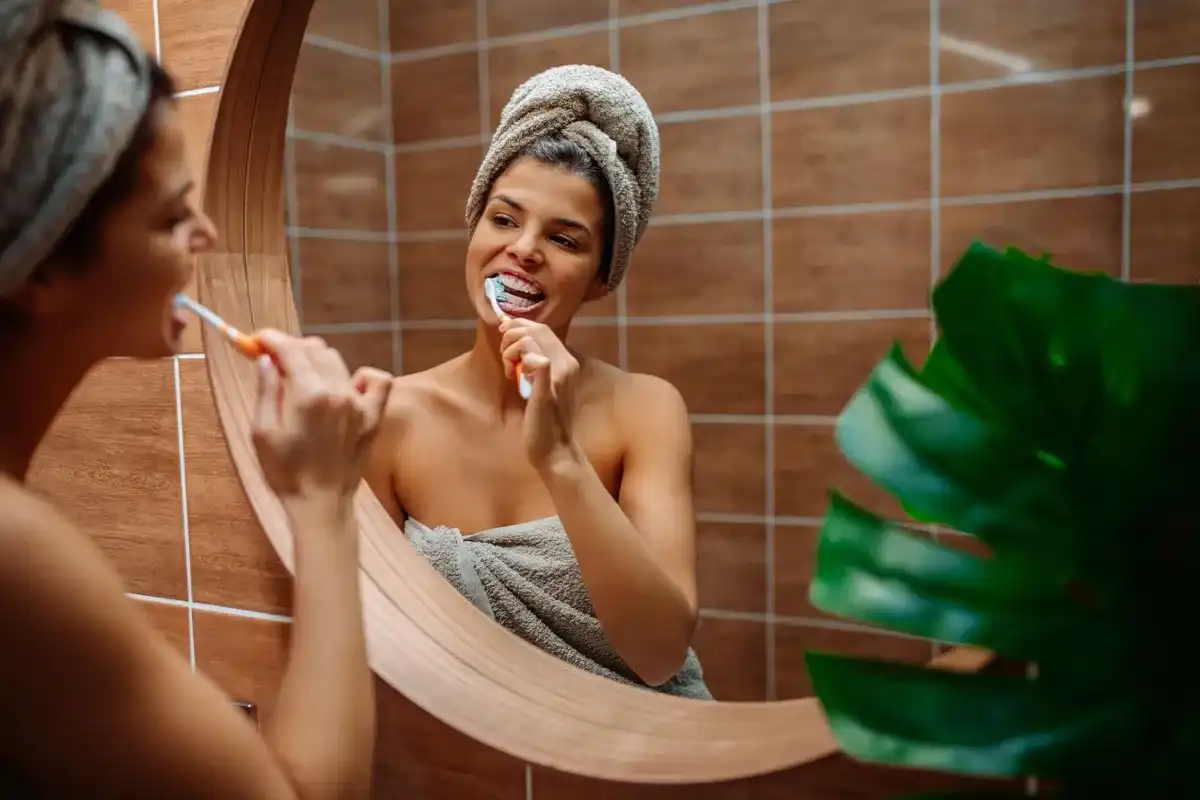Do I Have a Cavity vs. Stain: How To Tell The Difference?


One of the most common misconceptions about cavities is that they cause tooth stains or visible discoloration you can see in the mirror. But cavities vs. stains isn’t as simple as it might seem. Some cavities can cause dark stains on your tooth, or even white stains, while others simply create a deep hole that you can’t see without an X-ray of your tooth.
Do I Have A Cavity Or Is It A Tooth Stain?
The one and only way to determine if it’s cavities vs. stains on your teeth is to see your dentist. I know, I know. You want to be able to figure it out for yourself before you call the dentist’s office (or lose sleep over it.)
Here are the basic things you need to know about cavities and stains:
How To Identify A Cavity vs. Stain
When it comes to knowing the difference between a cavity vs. stain, they are both structurally different. Stains are either on the surface of your tooth or inside the tooth enamel. But cavities create physical voids inside of your tooth. The hole can also collect stains or food debris, which is why it may look brown.
When you’re performing your own self-exam in the mirror, here are the main differentiators between cavities vs. stains:
1. What Color is the Tooth in Question?
2. Is There Tooth Pain?
3. Is There Tooth Sensitivity?
4. Can You See Holes In Your Teeth?
If you can see a hole, it’s a cavity. No doubt about it. Do not eat or chew on that side of your mouth, because the weak tooth enamel will be more prone to cracking or breaking off entirely. Head to your dentist’s office ASAP, even if nothing hurts. And remember, you can’t see cavities between your teeth!
Causes Of Tooth Stains And Tooth Decay
Teeth are porous, even though they don’t look like it. Every tooth surface is covered with thousands of tiny “tubules” which are small little holes that house nerve endings. These tubules absorb stain particles from everything we drink, eat, and breathe into our mouth. When things like coffee soak into our teeth a few hours every morning, it’s only natural for our enamel to start to look darker than it was before.
Whereas with tooth decay, the enamel in our teeth is physically eroding because of acids secreted by plaque bacteria. Your tooth might look whiter at first, then brown. Or the cavity might skip the brown stage altogether and go straight to creating a visible hole.
Things That Cause Cavities
But even if you eat or drink everything healthy, you can still get cavities. How? By not thoroughly removing plaque on your teeth every day and skipping the dental floss. Not flossing is probably the biggest one, because brushing won’t reach between your teeth. If you’re not flossing those spaces, it’s really just a matter of time before a cavity pops up.
Things That Stain Teeth
What stains teeth the most? Anything that would stain a white t-shirt or tablecloth will also stain your teeth. Knowing what foods and drinks cause cavities and stains will help avoid this problem entirely.
For example:
- Red wine
- Soda
- Tea
- Curry dishes
- Tomato-based sauces
- Tobacco products
There are even some types of mouthwash that can stain your teeth. Chlorhexidine is a great example. This mouth rinse is by prescription only and it’s for people with chronic gum disease. You’re only supposed to use it for about two weeks.
Some medications—like tetracycline—can also cause dental stain in developing teeth. If you’re pregnant or suspect you might be, and you need an antibiotic, be sure your doctor knows you might be expecting as the prescription could impact your child’s future smile!
You can also see tooth stain when there’s an excess of minerals in your food or water supply. For example, if you live in an area with heavy fluoride levels in the soil and drink well water that isn’t filtered, it could cause hypermineralization in a developing tooth, resulting in dark brown or white spots and pitted textures.
Tartar stains teeth tooth. Or rather, it absorbs stain. If you’re behind on cleanings, that may be why you’re seeing yellow, brown, or black along your gum tissues.
Effect of Cavities on Your Overall Health
When you have several cavities or untreated areas of tooth decay, it physically breaks and erodes your tooth enamel. Both your speech and diet will be affected, not to mention your personal self-esteem. People with fewer teeth tend to eat less healthy, more processed foods.
If tooth decay evolves into abscesses, you’ve got an even bigger problem. Untreated abscessed teeth can cause bacteria to spread into your face—and even your brain—resulting in life-threatening situations that require hospitalization.
Losing teeth because of decay will also cause premature aging in your face, as our jaws naturally “resorb” (shrink) where the missing tooth once stood.
Tooth Stains and Cavities
A weird stain on one tooth usually isn’t stain, because if it were, it would be in other places too. Chances are it’s probably a cavity or some anatomical irregularity in that tooth that requires attention.
The most important thing is to check whether it’s cavities vs. stains on your teeth. Perhaps it’s discoloration because you’ve been drinking more coffee, had demineralization around an orthodontic bracket, or it’s deep grooves in the chewing surface of a molar where stain leaked in around your old sealants.
If you ignore the issue, you could easily be overlooking a small cavity. And left untreated, cavities always expand into the surrounding tooth structures. Eventually, tooth decay will also creep into the nerve of the tooth, causing an abscess. Oh, and it can “jump” to the neighboring teeth, too. Having your dentist check for—and treat—cavities early on will save your smile and your wallet.
If It's Tooth Stain…What Should You Do?
Some people are just more prone to tooth stain than others. If you’re one of them, you can take steps to avoid what’s causing the most stain on your teeth. Like berries, tomato sauces, smoking, tea, soda, etc. You can also drink more water or drink through a straw, so that those stain particles zip straight past your front teeth.
Next, make sure you’re brushing often and well enough. Practice good oral hygiene and avoid cavity-causing foods and beverages. Brush your teeth twice a day for two minutes at a time, minimum. Using an electric toothbrush is even better.
Make sure you’re scheduling regular cleanings with your hygienist every six months. That way the surface stains are polished off routinely.
And finally, consider teeth whitening or touching up your whitening a few times throughout the year. Whitening toothpaste can help polish off mild surface stains but won't remove stains in the little holes in your tooth. At-home or professional whitening products are extremely effective against mild to moderate tooth staining to keep your smile looking fresh.
Shop: I’ve been using Vacay Whitening Strips because they work—without the sensitivity.
Talk With Your Dentist About Cavity vs. Stain
Stain and tooth discoloration can be a symptom of tooth decay. But not all cavities cause teeth to stain. Separating some cavities vs. stains on teeth ultimately requires an exam with your dentist.
If you’re experiencing symptoms of pain, sensitivity, have food packing down in your tooth, or something feels broken, it’s not a stain. Chances are, it’s more than just a small little cavity, either. Always see your dentist with something in your mouth changes. Best case scenario, it’s surface stain or tartar that your dentist or hygienist can clean off. Worst case, it’s a cavity. But by catching cavities as early as possible, they’re smaller and more affordable to treat.

Make your inbox smile!
Subscribe






